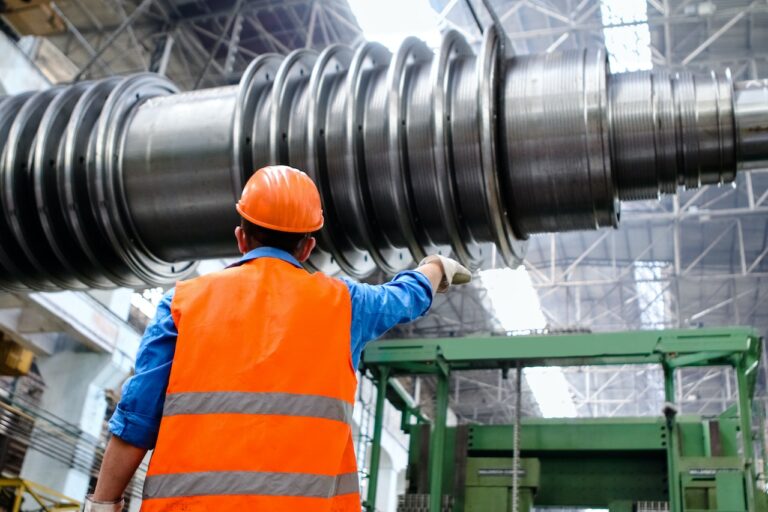How can the steel industry reduce emissions?
With increasing urgency to decarbonize the industrial sector as demands from regulators, investors and consumers intensify, the steel industry urgently needs a practical plan to drive emissions reductions. But this will not be easy, and in order to achieve important carbon reduction goals, the steel industry must make fundamental changes to its production processes. The solution is to capture the carbon dioxide produced by traditional steel plants and reuse or store it underground; or shut down existing stainless steel manufacturers and build new plants, both of which are expensive.
Boston Consulting Group (BCG) expects that laws and regulations aimed at achieving carbon neutrality will continue to be introduced in the future, resulting in higher and higher carbon costs for steel companies using traditional processes.
The EU is a world leader in regulatory reform, with a goal of reducing greenhouse gas emissions by 55% by 2030 and carbon neutrality by 2050. The EU has largely used a market-based approach, requiring steelmakers to pay for the carbon dioxide they emit. In addition, the EU will soon introduce a new “Carbon Border Adjustment Mechanism” (CBAM), which essentially imposes tariffs on imported steel based on carbon content.
As the world’s largest steel producer, China aims to achieve carbon neutrality by 2060 and is currently introducing a national carbon pricing mechanism. Starting in 2021, China launched a carbon emissions trading system, first covering the power industry, and is expected to expand to the steel industry in the next few years. The scale of China’s steel production is huge, and even if a small portion of it is converted to green steel, it can supply a large amount of environmentally friendly steel to the market. Most of this can meet European demand for green steel, thereby significantly affecting the bilateral trade balance.
After combing through all the decarbonization trends in the steel industry, it is clear that if steel producers want to remain competitive, they must rapidly shift production models and reduce carbon emissions. Steel companies can adopt a “three-step” strategy to achieve their goals and gain a competitive advantage: influence the overall regulatory agenda and definition of green steel, support the development of the green steel market, and implement large investment projects within the required time and budget.
Even under heavy regulatory pressure, the steel industry’s emission reduction is undoubtedly a “big problem”, but BCG also observes a feasible opportunity: industry pioneers can define new market mechanisms, participate in green steel market competition, and use carbon neutrality to transition achieve rapid development.
The steel industry accounts for about 7% of all man-made carbon emissions, so it is a key area of emission reduction for regulators. In December 2021, the 26th United Nations Climate Change Conference (COP26) made a commitment to reduce emissions. Most advanced economies have set targets for net-zero emissions by 2050, and many have announced ambitious 2030 emissions reduction targets.
The EU’s “carbon border adjustment mechanism” may be fully implemented in 2026, when steel importers must pay the same carbon price as EU steel producers for the carbon emissions of products sold in the EU. The European Parliament’s Environment Committee proposed at the end of 2021 that the “carbon border adjustment mechanism” should start to accelerate implementation earlier than originally planned, and need to cover more products. Originally scheduled for 2035. In January 2022, the European Commission rejected the proposal, arguing that the practice violated the EU’s commitments to the World Trade Organization.
The U.S. has taken a different approach, returning to the Paris Agreement with plans to reach a net-zero target by 2050, but a carbon pricing system across the federations has yet to be established. While some regional carbon pricing systems exist, at the national level, action has focused on regulating emissions and product standards, green procurement and tax incentives. It is unclear whether a series of U.S. packages would qualify for export exemptions under the EU’s Carbon Border Adjustment Mechanism.
To meet the emissions reduction targets agreed upon by regulators around the world, the steel industry must undergo a massive technological transformation that affects the entire steel industry ecosystem.
Given the existing legal and technical constraints, as well as the cost pressures that may be placed on the industry, in order to better address the challenges and transform traditional processes into methods that are sustainable for the business and the climate, steel producers should adopt “three walk” strategy.
First, help shape the overall regulatory agenda and definition of green steel. Steel producers should present clear reasons and fact-based views, articulate their positions in negotiations, and engage in wider dialogue as soon as possible.
Second, support the development of the green steel market. Green steel technologies (such as direct reduced iron utilizing green hydrogen and electric arc furnace technology) will significantly increase the production cost per ton of steel, but in many consumer goods industries, rising steel prices will have a limited impact on rising end consumer prices. BCG predicts that by 2030, European automakers, home appliance manufacturers and other companies facing the need to reduce carbon emissions will purchase 20 million to 40 million tons of green steel. In addition, for steel companies to succeed in the green steel market, they need the right partnerships and excellent supply chain management capabilities.
Also, implement large investment projects within the stipulated time and budget. New production technologies require billions of dollars in investment by steel producers, far exceeding the capital expenditures of most steel production projects. Since the last round of the international financial crisis, the steel industry has not recovered its capital investment.
Therefore, steel companies must ensure investment security through prudent planning and professional execution, and ensure that projects are completed within the specified time and budget. Faced with the rapidly transforming carbon emission pattern, steel production enterprises must take the initiative to play a key role in the changing market and business environment.
Study the impact of all regulatory proposals on your own business and influence the progress of negotiations even when you are ready to compromise; at the same time, build new sales expertise and develop a sound value proposition for early green steel customers. Steel companies also need to build up their expertise in managing large investment projects early on. Dialogue and meaningful action in these areas can help steel companies overcome their toughest challenges and weather tough times for the steel industry.




